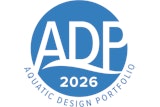![Commonwealth Community Recreation Centre | Edmonton, Alb. [Photos by Tom Arban, courtesy of MJMA]](https://img.athleticbusiness.com/files/base/abmedia/all/image/2017/11/ab.spotlight1117_feat.png?auto=format%2Ccompress&q=70&w=400)
In 2010, Congress added a provision to the Americans with Disabilities Act that mandated all public pools and spas — hotel, rec center, country club or otherwise — be accessible to individuals with disabilities by the end of 2012. In most cases, compliance could be accomplished by installing a lift chair or ramp — facility enhancements that likely cost somewhere in the neighborhood of $8,000 to $10,000, which was better than being slapped with a $55,000 fine.
While the new accessibility rules were a step in the right direction, they were a blunt solution to a complex problem with myriad implications for everyone from facility designers and operators to program directors and end users.
![George S. Eccles Student Life Center, University of Utah [Photos courtesy of Uninversity of Utah]](https://img.athleticbusiness.com/files/base/abmedia/all/image/2017/11/ab.spotlight1.png?auto=format%2Ccompress&fit=max&q=70&w=400) George S. Eccles Student Life Center, University of Utah [Photos courtesy of Uninversity of Utah]
George S. Eccles Student Life Center, University of Utah [Photos courtesy of Uninversity of Utah]
Progress
Justin Caron, principal architect at Aquatic Design Group, says there has been a greater awareness around accessibility in recent years. "I attribute this to the industry focusing on it more earnestly beginning 10 to 12 years ago," Caron says. "Every time a new project opens that provides access for all in seamless and creative ways, that calls attention to the fact that things don't have to be like they are just because that's how they've always been."
Designing facilities that are truly inclusive means designers and operators have to think differently, as success in this area is dependent on expanding our idea of what it means to provide facilities and programming for everyone.
RELATED: PRODUCT SPOTLIGHT 2017: Aquatic Components
Mark Weiss, manager of aquatics at the University of Utah's George S. Eccles Student Life Center, says he's always open to accommodating the needs of his guests but admits that this has to be accomplished on a case-by-case basis. "When people ask for accommodations, we're always accepting," Weiss says. "We had one lady who had a condition where she couldn't really be touched, and we tried to accommodate that request in any way we could."
Weiss says it's important not to marginalize those who request special accommodations, noting that most of us will eventually be the benefactor of accessibility solutions. "Everyone really does have a disability at some point in their life," he says, "because things will inevitably get harder as you get older."
"Inclusivity starts from the moment you think about going to the facility, coming through the entrance sequence, coming through the locker rooms, and then actually entering the swimming pool." |
Douglass Whiteaker, principal architect at Water Technology Inc., says too many people see accessibility as a problem to be solved rather than just another consideration in the design of a facility. "Accessibility is an important aspect of having universal inclusivity," Whiteaker says. "That's really what everybody wants to do, and it starts from the moment you think about going to the facility, coming through the entrance sequence, coming through the locker rooms, and then actually entering the swimming pool. All of that has to be as seamless as possible."
Caron sees access through the holistic lens of inclusivity and doesn't discriminate between those with disabilities and those who simply have other needs or considerations. "I'm particularly interested in gender-inclusive restrooms and locker rooms," he says. "We're seeing more interest both from architecture and planning firms and from clients, as well as users, for eliminating the single-use locker rooms, or at least minimizing them, and providing more gender-neutral units. This helps as well with providing easily accessible facilities for all users."
According to Weiss, parents with young and/or opposing gender children, as well as companion care and transgender individuals, are the obvious beneficiaries of gender-neutral units, but adds that those with modesty concerns due to religion or other factors also benefit from these accommodations. "Not much has changed over the past five years with regard to aquatics infrastructure," Caron says "However, much greater emphasis on accessibility and inclusivity has been adopted by operators. Simple things like having and providing sufficient wet-use wheelchairs for patrons and adding accessible lifts to facilities in excess of code are much more common in today's facilities than even those from 10 years ago."
![The REC of Grapevine | Grapevine, Texas [Photo by James Ray Spahn]](https://img.athleticbusiness.com/files/base/abmedia/all/image/2017/11/ab.spotlight2.png?auto=format%2Ccompress&fit=max&q=70&w=400) The REC of Grapevine | Grapevine, Texas [Photo by James Ray Spahn]
The REC of Grapevine | Grapevine, Texas [Photo by James Ray Spahn]
Universal access
Perhaps what is most vexing about providing inclusive aquatics facilities and programming is the spectrum of needs exhibited by any given community, from individuals with physical disabilities to cognitive issues like autism, not to mention aging adults and young children.
"The key question is probably, 'What is most appropriate for any given person at any given stage in their life?' " posits Susan Grosse, founder of Aquatic Consulting & Education Resource Services. "That applies to people who aren't ordinarily categorized as disabled. Let's say an adult who in their 40s is morbidly obese at 450 pounds. What's going to be appropriate for them in terms of getting in and out of a swimming pool is entirely different from someone who's a paraplegic."
"Each project should be viewed as a unique opportunity to provide services appropriate for the intended uses of that facility." |
Grosse is realistic about the challenges inherent in providing truly universal aquatics access. She says accessibility issues have been a concern since the 1960s, when Congress passed the first legislation that mandated accommodations for kids with disabilities attending public schools. Facility operators, she says, are motivated to provide access by three things: compliance with current law; their own personal bias (whether they actually care); and whether they have a personal stake in the matter — a relative or a friend with disabilities.
"I cannot think of a facility or program that is perfect," Grosse says, ceding that smaller communities have a better chance at providing an inclusive facility. "Small communities can survey their current resident population and figure out what they need, and they may have one or two kids in wheelchairs in their whole school system, if any. They may have one or two returning servicemen in Wounded Warrior; they're not going to have 50. But the big-city areas have a real a problem meeting everyone's needs. They just can't."
Once a designer or operator understands who they're serving, they can design to that population or add equipment with that population in mind. Caron notes that a high school with only a few students with disabilities might provide an ADA-compliant accessibility lift and stairs as means of access, whereas a hospital or therapy pool would be more likely to provide the lift, an ADA-compliant ramp, stairs or more. "Each project should be viewed as a unique opportunity to provide services appropriate for the intended uses of that facility," Caron says. "When those uses are unknown or undetermined, it's our philosophy to provide accessible means of access for the full potential of the facility — not just its primary use."
The same reasoning should apply to programming. The word Grosse returns to when thinking about programming is "appropriate," which she calls a "soft term" and one that depends in many ways on how a facility balances the needs of its clientele with fiscal realities.
"You can't define 'appropriate programming' the way you can the inches of a doorway," she says. "A parent might think that an inclusive program is appropriate for their very severely disabled child. On the other hand, the people running the program might very well know that this person needs special assistance and highly qualified people to work with that person. And the parent and a programmer may disagree on 'appropriate,' and then you get into who is going to fund what's 'appropriate.' "
Awareness around accessibility is growing. Inclusivity concerns are increasingly pushed through the design process by owners and operators, as opposed to being pulled through by the design team, according to Caron, who stresses that even a little more empathy and understanding can make a big difference. "I think a great mental reset that can help frame this topic is to consider that for able-bodied, fully functioning people, in many cases, nothing in your entire day is as physically, mentally and emotionally draining as the act of getting out of bed can be for someone with a disability."
|
A challenge, an inspirationThe challenge is significant, but there are examples of facilities that have managed true inclusivity. The way a few kids playing in a hotel pool shunned Gordan Hartman's daughter Morgan, who has physical and cognitive disabilities, was the impetus behind a new "ultra-accessible" theme park. It was the look of disappointment in Morgan's eyes that set Hartman on a mission to create the kind of place where Morgan and others underserved by mainstream theme parks could go and have a good time. In 2010 Hartman and his wife Maggie opened "Morgan's Wonderland" in San Antonio. In June of this year, the Hartman's added a new attraction called Morgan's Inspiration Island that is a perfect example of an aquatics facility that understood its purpose and was designed to include as broad a swath of its population as possible. Inspiration Island opened this spring and features six major elements that comprise the $17 million, tropically themed park. "We decided to call it Morgan's Inspiration Island because Morgan truly has been the catalyst for every project we've pursued to help the special-needs community," Hartman says in a statement on the park's website. Every element of the Island is wheelchair-accessible, and waterproof wristbands with RFID technology are available so parents can easily locate their kids. Morgan's Island also caters to those with sensory disorders, allowing guests to quickly change water temperatures if they have sensitivity issues. The park also teamed up with the University of Pittsburgh to develop wheelchairs propelled by compressed air. Expensive battery-powered wheelchairs can't get wet, so the park has special Morgan's Inspiration Island PneuChairs™ available on a first-come, first-served basis, along with two other waterproof wheelchair models — a push-stroller type for guests needing assistance from a caregiver for mobility, and a rigid-frame, manual wheelchair for guests who can push themselves. Bob McCullough, the park's director of communications, says the feedback on the park has been tremendous. "The key word really is 'inclusion,' " McCullough says. "The whole idea is to bring people together in a barrier-free environment." |
This article originally appeared in the November|December 2017 issue of Athletic Business with the title "Everybody into the pool: Inclusivity, accessibility in aquatics on the rise." Athletic Business is a free magazine for professionals in the athletic, fitness and recreation industry. Click here to subscribe.






































